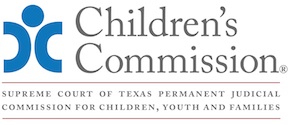Introduction
Please see Checklist Section for ICWA Checklist.
This chapter is excerpted from the DFPS Attorney Manual.
Excerpted with permission of DFPS.
The Indian Child Welfare Act of 1978 (ICWA), 25 U.SC. §§ 1901 – 63 25 C.F.R. Part 23, is a federal law that imposes special standards and requirements when a child welfare agency seeks to intervene to protect an “Indian child,” as defined by statute 25 U.S.C. § 1903(4). The law was enacted to protect not only Indian children, but their families and tribes. 25 U.S.C. § 1902. To this end, ICWA affords important rights to both families and tribes, including the right to petition a court with competent jurisdiction to invalidate any action for foster care placement or termination of parental rights if key provisions of the Act are violated. 25 U.S.C. § 1914.
In February 2015, the Bureau of Indian Affairs (BIA) released the updated Guidelines for State Courts and Agencies in Indian Child Custody Proceedings (Guidelines).[36] The Guidelines are not legislative and are thus not binding, but they represent the BIA’s interpretation of ICWA. (Yavapai-Apache Tribe v. Mejia, 906 S.W.2d 152, 164 (Tex. App. —Houston [14th Dist.] 1995, orig. proceeding [leave denied].) The new Guidelines state “these guidelines should be applied in all proceedings and stages of a proceeding in which the Act is or becomes applicable.” Also, the BIA has proposed “Regulations for State Courts and Agencies in Indian Child Custody Proceedings.”[37] The Proposed Rules include most of the Guidelines, and if passed, would be binding.
The U.S. Supreme Court has only issued two opinions addressing ICWA, the first in 1989, Mississippi Band of Choctaw Indians v. Holyfield, 490 U.S. 30 (1989), and the second, in June, 2013. In the recent opinion, Adoptive Couple v. Baby Girl, 133 S.Ct. 2552 (2013) the Court interpreted ICWA narrowly, restricting the rights of a parent who has never had custody of an Indian child and limiting the circumstances when the placement preferences apply. A summary of the case is provided in the Case Notes below and practice implications are noted in appropriate sections below.
